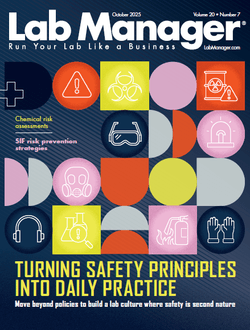It’s an unfortunate fact that few women in STEM rise to the ranks of senior executive leaders in the life sciences, healthcare, or academia. In 2019, the US Equal Opportunity Commission (EEOC) reported that “…25.9 percent of pharma leaders were STEM women.”1
For those few STEM women leaders who do reach the top of their organizations, what makes them super leaders? More importantly, what are the lessons the next generation of STEM women need to learn to be extraordinary STEM leaders themselves?
Portrait of the extraordinary STEM woman leader
In 2023, I interviewed 21 STEM women in the life sciences and healthcare, analyzing their lived experiences working with or for extraordinary STEM women leaders.
Interviewees confirmed that empathy is the first of three traits that distinguish exceptional leaders. Interviewees reported that the extraordinary STEM woman leader puts people before task by placing the needs of others before her own. She takes time to have coffee with those who seek her advice or friendship. An interviewee said her admired STEM woman is an emotional savant, a person who is exceptionally in tune with professional as well as personal challenges others face. She makes others feel like they matter.
The second trait is firmness, if not fierceness, in defending what the STEM woman leader believes is right and true. She is not shy and steps up to engage in constructive disagreements. She talks about topics that other leaders may ignore because it is uncomfortable or too risky to talk about publicly.
The extraordinary STEM woman leader is a superior communicator. She inspires technical and non-technical colleagues with her vision of what could be. She prefers to paint broad transformative ideas yet leaves time to delve into details. She asks questions to gain clarity and commitment from everyone before key decisions are made or bold actions taken.
Four strategies for those who aspire to be extraordinary leaders
The extraordinary STEM woman leader is empathetic, fierce, and a superior communicator. These are admirable traits, but is that all it takes? Here are four strategies to construct a powerful career action plan to be an exemplary leader who also happens to be a woman scientist.
- Consider a career team – Build a virtual team of wise, trusted, and respected advisors who will invest in you and your career success. A career team is composed of those whose combined knowledge, life experiences, and connections can turbocharge your career trajectory. A career team encourages you to take calculated risks, stretching you to practice new leader-like behaviors.
Who should be a member of your career team? STEM women who want to be an aspiring leader tend to have one mentor. A mentor is someone more senior, more experienced, and able to steer the mentee away from making career blunders. A mentor points out what to do and not do when handling demanding work situations. A mentor is a trusted member of your career team.
For your second career team member, recruit an advocate; someone who will speak up for you when you are not in the room when promotions are discussed. An advocate also shares hidden job opportunities such as leading a high-visibility project. When selecting an advocate, look for someone who will champion your cause, speak positively about your talents, and most importantly, provide examples of your leadership potential.
But do not stop there with a mentor and advocate. Add two more key career team members.
Look for a connector; someone who has broad and deep networks inside and outside the connector’s firm. A connector has an established reputation of joining people together who should know each other. A connector links you to others who can open doors for you and those who are key decision-makers for grooming and selecting the next executive leader.
Finally, add a career coach to your team who can help you bring forward your vision of what a fulfilled career would be like. A career coach supports you in designing an action plan to ensure your career dreams become reality. Your career coach will hold you accountable for the action steps you choose to take to advance to a leadership role. A career coach is your thought partner and your cheerleader.
Lab Management Certificate
The Lab Management certificate is more than training—it’s a professional advantage.
Gain critical skills and IACET-approved CEUs that make a measurable difference.
Just like any team, investing time and effort in nurturing your career team will help you reach your career goals faster than if you were trying to advance on your own.
- Build a reputation around your scientific expertise – Get out of the lab. Leave your office. Schedule informal conversations with others outside your area of expertise. Show passion and excitement about your area of science or technology. Educate others about your achievements, what you are proud of, and why these accomplishments are meaningful to you and your industry. Be accessible to those who struggle with understanding your area of expertise. For example, if you are an experienced statistician and there are others on your team who struggle with basic statistics, offer to teach them. Find time to explain just what they need to know by sharing resources, examples, and tips that will fill their knowledge gaps.
- Practice an intentional communication style – Be aware of the words you choose. Women have a tendency to weaken their communication style by falling back on unconscious communication habits that do not serve them. Women using hedging language such as “maybe”, “sometime”, “possibly” sounds weak and ambiguous. Alternatively, select language that is concise such as “the report will be ready Monday at 3 pm”. There is no confusion about when the report will be ready.
Women tend to start a sentence by apologizing. The next time this happens, notice the impact it has on listeners when the opening is “I’m sorry”. This apologizing starts the conversation off on an unequal footing where the speaker is a level down and the listener is one up. The same argument holds for the word “but”. Listeners rarely listen after the word “but”. Instead insert “and” or “also” between phrases.
Speaking more slowly and at a lower pitch than normal characterizes a speaker who is in control, calm, and confident. Prepare your remarks so that you make a concise statement, pause, and then follow up with details. Learn how to be comfortable with silence to allow others time to consider your important ideas. Asking open-ended questions contributes to clarity. For example, “I’m not sure I understand. Can you say more?”
For those who are shy and find it difficult to talk to groups of people or teams, try this: View your tendency to be silent as an asset, since you are an attentive listener. Use your focused listening skills during a team meeting by taking notes of action steps. At the end of the meeting, volunteer to summarize the team’s action steps, which shows that you are engaged even though you are quiet during the team meeting.
- Be a keen observer – Look around your organization and watch STEM women leaders who are exceptional. For example, notice how the STEM woman leader enters a room, where she sits, how she makes eye contact with each person in the room. See how she facilitates discussions during meetings, inviting everyone to contribute.
Notice how she waits for the right time to share her opinions so that she does not prematurely close off an open dialogue. Follow what she does when the conversation turns to errors, failures, or disappointments. The extraordinary STEM woman leader avoids finger pointing and talks about her own mistakes. She makes it safe for others to share their failures without being judged. Watch how she maintains a respectful relationship with those who take an opposite point of view. Listen to how she negotiates so that there is a fair and final resolution to deadlocked issues. Finally, see how she gets work done thanks to others through masterful delegation skills.
At the end of the meeting, watch for how the extraordinary STEM woman leader ensures alignment across team members about decisions and next steps. The extraordinary STEM woman leader leaves meetings where positive vibrations are the result of innovative and creative problem-solving. Team members are excited and motivated to get work done and collaborate to make progress toward team goals. The extraordinary STEM woman leader has mastered the art of productive, efficient, and effective team meetings.
Focus on these four practices to take your seat at the top of your organization. Add grit and grace to being exemplary. The author, poet and civil rights leader, Maya Angelou, said it best: “I’ve learned that people will forget what you said, people will forget what you did, but people will never forget how you made them feel.” Build strong, trusting, and respectful relationships with direct reports, peers, managers, and executives. Surround yourself with others who aspire to be great. Be memorable because you genuinely care about others. These are the lessons to learn if you are ready to be an extraordinary STEM woman leader.
Reference:











